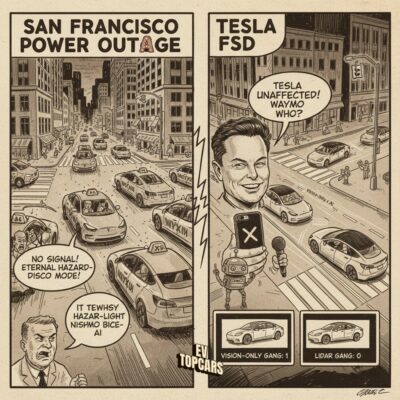Motor vehicle drivers using highways need to have their vehicles regularly maintained. This is very important to ensure safety in traffic. So, how might the inspection process work for an electric vehicle?
Electric vehicles (EV: Electric Vehicles) differ greatly from vehicles with internal combustion engines in terms of their working principles. Of course, this does not mean that EVs do not need regular inspection. As with other vehicles, it is necessary to comply with the periodic maintenance schedule for EVs. In this way, a safer and longer-lasting use is possible.
As in the rest of the world, the responsibilities of vehicle drivers are supported by laws. According to the Highway Traffic Law, every vehicle user on the road is obliged to have their vehicle inspected on time. Mandatory vehicle maintenance, which is carried out at regular intervals, The only authorized institution in this field in our country, in accordance with international standards.
1. How Does the Electric Car Inspection Process Work?
Known for their environmentalist nature, electric vehicles have different parts and functions than traditional vehicles. This difference stands out as an advantage in the maintenance process of vehicles. EVs that do not require an engine inspection have far fewer moving parts than petrol vehicles. So what stages might EVs go through in the inspection process? Let’s examine it together:
1.1. Standard Care
In electric vehicles, as in every vehicle, the vehicle identity is first checked. Then, general inspection points such as lighting equipment, bodywork, vehicle accessories, high voltage cables, seat belts, windows and horn, which are critical for vehicle safety and driving comfort, are checked.
1.2. Tire Rotation
If the vehicle is not in line and is pulling to the right or left, this indicates that tire rotation should be performed. It is better to change the tires every six months according to the seasons in order for the tires to wear evenly and to prolong their life. Thus, loss of balance in the vehicle can be prevented.
1.3. Brake System Check
Two types of braking systems are used in EVs, standard and regenerative. Regenerative braking occasionally uses the engine as a generator to charge the battery. As long as clean brake fluid is used, EV brakes can last longer than standard brakes on conventional vehicles.
1.4. Battery Check
In electric vehicles, the battery is one of the most important components of EVs in terms of both engine operation and safety. Batteries with a certain lifespan need to be checked at regular intervals to detect any premature wear or leaks.
1.5. Software Updates
Bringing many new technologies with them, EVs are like computers that move on four wheels, with few parts and a lot of hardware. Electric vehicle manufacturers are also looking for ways to improve vehicle performance by developing this technology. As a result, EVs may receive occasional software updates.
Learn More: What Are Electric Vehicle Parts and Their Functions?
2. Electric Vehicle Maintenance Plan Example
| Maintenance Plan for 2019 Chevrolet Bolt EV | |
| Every month (by vehicle owner) | Tire pressure is checked and air is pumped when necessary. The windshield wiper fluid is checked and filled if it is missing. |
| Every 12k kilometers (approximately) | Tire rotation, charging module, battery, vehicle accessories, converter, temperature system, brakes, accelerator pedal are checked. Check if there is a leak in the battery. |
| twice a year | Abrasive materials such as road salt are washed from the underbody of the vehicle with just water. |
| Every 24k kilometers (approximately) | Change the windshield wiper blades. |
| Every 58k kilometers (approximately) | Cabin air filter is changed. |
| Every 120,000 kilometers (approximately) | The gas springs of the hood are replaced. |
| every five years | The vehicle coolant is drained and renewed. Brake fluid is changed. |
| every seven years | A/C dryer is replaced. |
3. What are the Differences in Electric Vehicle Inspection?
Electric vehicles still cost more than conventional vehicles, but in the long run, things turn around. Electric vehicle drivers save cash over the years, thanks to the fact that the periodic maintenance costs of EVs are lower than those of conventional internal combustion vehicles.
3.1. Less Parts More Savings
According to research, EV users spend about a third of what traditional car users spend on regular inspections. Because electric vehicles do not have components such as fuel tank, gearbox, clutch lining, pistons, exhaust system and oil and water pump that require periodic maintenance . EVs need to be inspected for high-voltage electrical systems such as cables, traction battery and charge input. At the same time, brake wear is significantly reduced due to regenerative braking.
Learn More: Is hover boarding dangerous? Know the risks of this electric skateboard
3.2. Exhaust Inspection Exemption
Exhaust gases that threaten the environment and human health are emitted by conventional vehicles every day in traffic. Motor vehicle drivers with an exhaust outlet must have their exhaust emission measured before the vehicle inspection. Electric vehicles do not have exhaust pipes. Therefore, EVs that do not cause exhaust emissions are also exempted from the exhaust emission inspection to determine how much this gas harms the environment.









1 Comment
What Are the Types of Electric Vehicles?
What Are Electric Vehicle Parts and Their Functions?